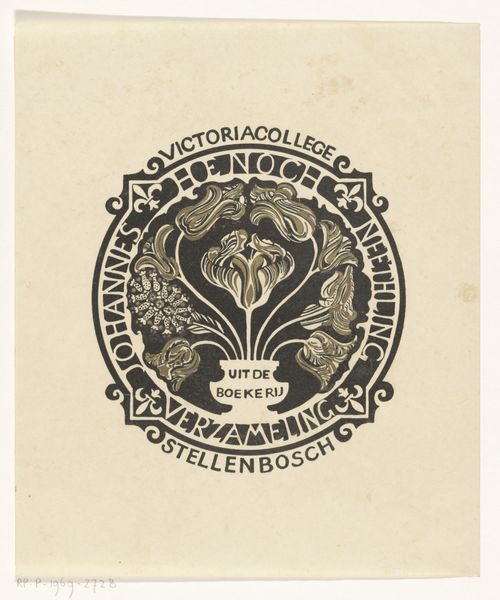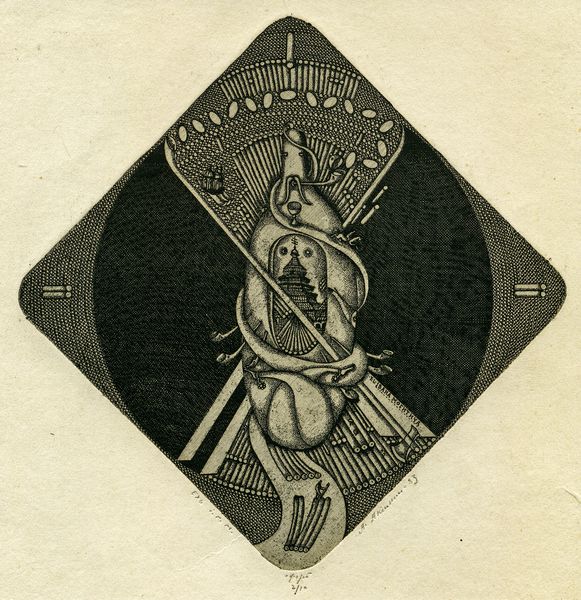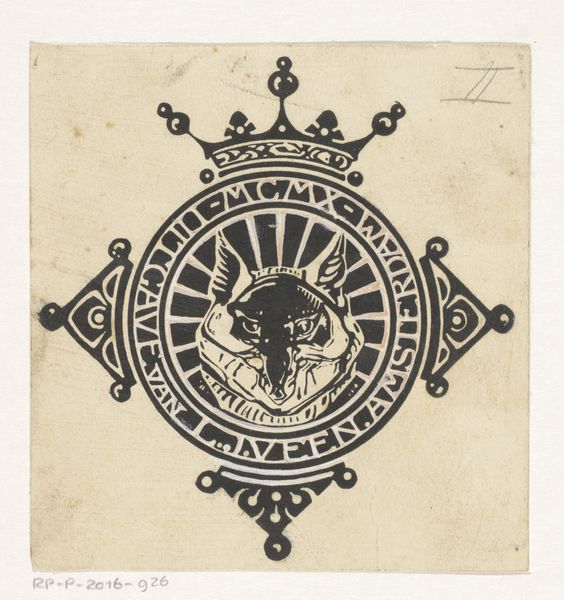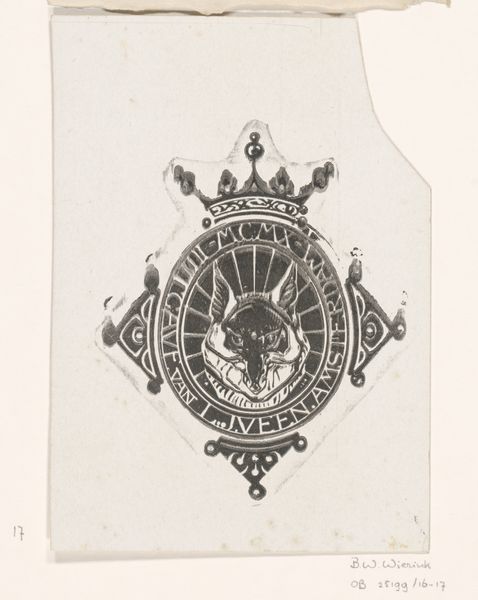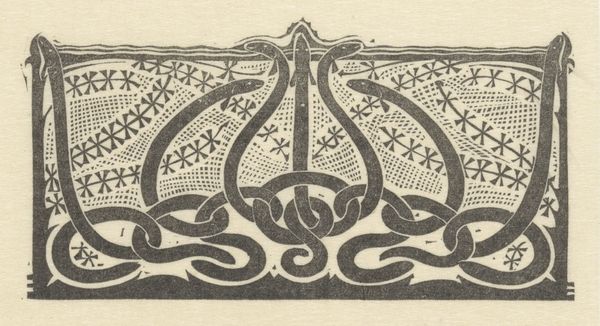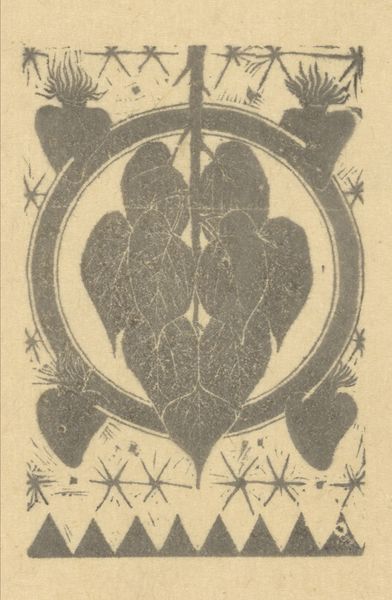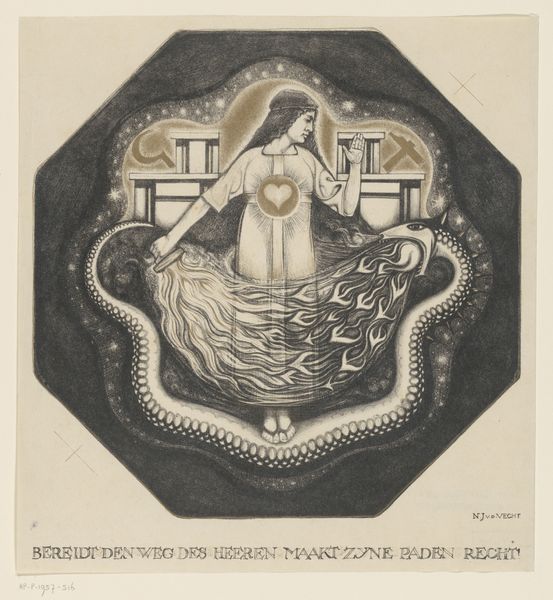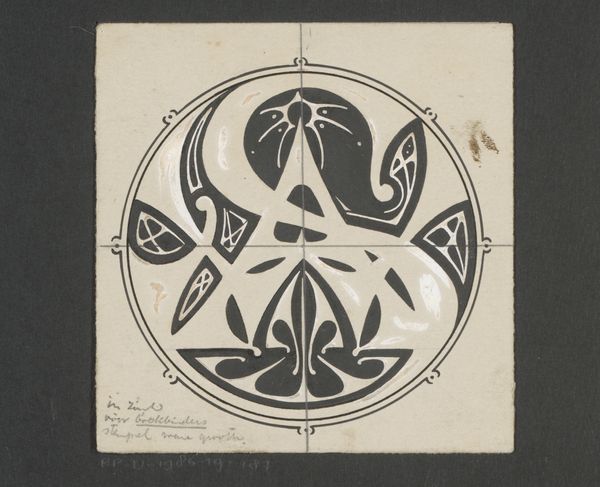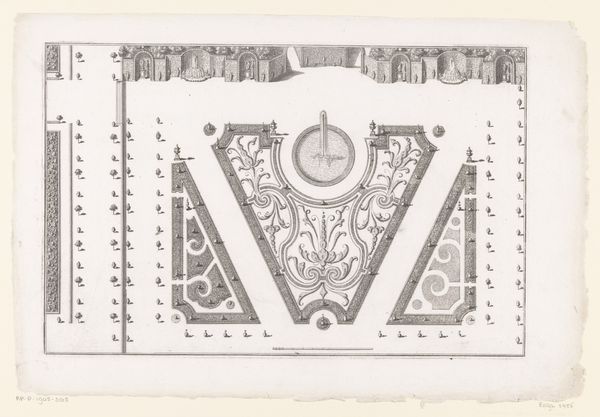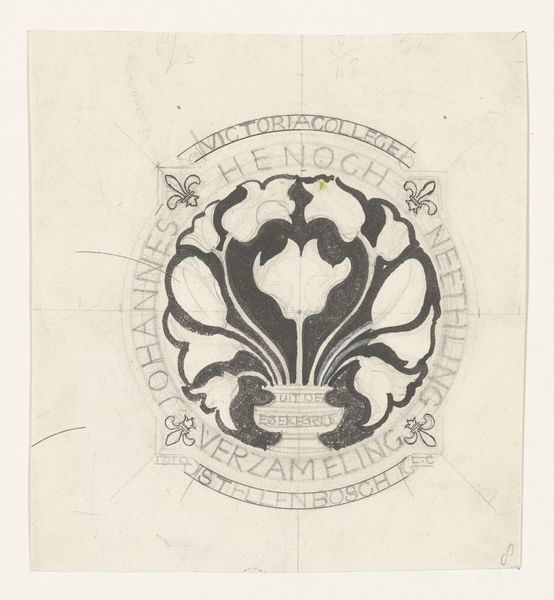
drawing, print, watercolor
#
portrait
#
drawing
# print
#
caricature
#
watercolor
#
line
#
symbolism
#
cityscape
#
watercolour illustration
Dimensions: height 330 mm, width 290 mm
Copyright: Rijks Museum: Open Domain
Curator: Richard Nicolaüs Roland Holst created this ex libris design, "Ontwerp voor ex libris van A. Roland Holst," in 1915. It's a drawing rendered in watercolor, presently held at the Rijksmuseum. Editor: What strikes me first is its melancholic air. The predominantly cool tones—the blues and grays—coupled with the solitary figure, evoke a sense of quiet desolation. And how the lines coil inward... Curator: Precisely! Consider the context: Holst, deeply involved in socialist ideals and the Arts and Crafts movement, would've been very interested in how art could elevate the common book. Bookplates democratized art; anyone could own an original work, of sorts. The circular form suggests totality, containment. The act of enclosing art becomes just as crucial. Editor: I'm particularly drawn to the stylistic interplay of line and form. The curves of the waves contrast with the more angular rendering of the tent-like structure sheltering the figure. It's a composition deliberately calling attention to shape relationships and materiality, right? It almost feels medieval. Curator: Yes, and let’s not ignore that swirling crescent above! The image blends the personal with larger, almost cosmic anxieties; his concerns about society are also material concerns, part of his method. And also his labour, how can that toil translate into something so intricate and ethereal as a bookplate. Editor: A potent point. The figure inside the "tent," rendered with minimal detail, also echoes that sensitivity; the lack of detail almost invites a universal projection, so, perhaps, he wants people to insert themselves within that emotional tableau. The very technique, watercolour on paper, gives it a fragile, almost ephemeral quality that contributes to its atmosphere. Curator: Indeed, you're suggesting Holst employed this composition of material, scale, and imagery to invite viewers to confront their interiority. A solitary figure protected but in solitude… The viewer contemplates not only the aesthetics of its making, but the potential relationship that emerges between art, text, production, and reader. Editor: Exactly! Analyzing its aesthetic strategies allows us to explore those deeper thematic resonances, those structural oppositions within the image. A poignant dance of form and meaning. Curator: Agreed; thinking through his process unveils hidden narratives! It changes our entire perception, viewing the object as a byproduct of labor to its potential effect in changing reading habits and inspiring further art.
Comments
No comments
Be the first to comment and join the conversation on the ultimate creative platform.
